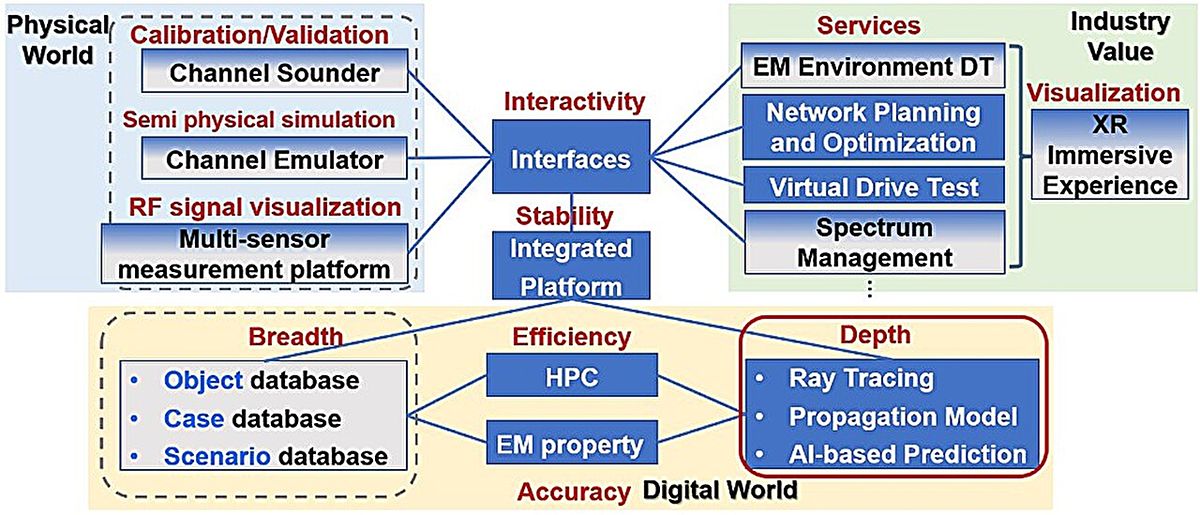Learn how digital twin technology can enhance safety, comfort, affordability, and eco-friendliness in railway wireless communication networks. Explore the key technologies and challenges involved in implementing digital twin systems for smart railways.
Revolutionizing Railway Wireless Networks with Digital Twin Technology
The railway industry is continuously striving to enhance safety, comfort, affordability, and eco-friendliness by incorporating advanced technologies such as GPS and artificial intelligence. This has led to an increased demand for improved railway wireless communication networks. One emerging technology that shows promise in meeting these demands is the digital twin (DT) system, which can revolutionize the construction, operation, and maintenance of railway wireless networks. However, implementing DT in this context comes with its own set of challenges.
According to Professor Ke Guan, the primary challenge in achieving DT for railway wireless networks lies in accurately and efficiently modeling radio wave propagation and wireless channels across various frequency bands. In a recent review published in High-speed Railway, Professor Guan and his team outlined the key technologies necessary to overcome these challenges, which can be categorized into scenario modeling, radio wave propagation characterization, and integrated operation platforms.
Scenario Modeling for Accurate Reconstruction
Scenario modeling involves the use of technologies such as point cloud, grid dataset, satellite imaging, and oblique photography to achieve three-dimensional (3D) automatic scenario reconstruction. Additionally, deep neural networks (DNNs) can be utilized to understand the features of the scenario. The electromagnetic parameters of materials in the scenario can be measured using the network parameter method.
By leveraging these scenario modeling technologies, the railway industry can accurately reconstruct the environment and layout of railway wireless networks, providing a solid foundation for further optimization and improvement.
Characterizing Radio Wave Propagation
Radio wave propagation characterization is crucial for understanding how wireless signals behave in different scenarios. The researchers introduced ray tracing (RT) technology, which enables accurate deterministic modeling of wireless channels. To address the issue of excessive computation, they also implemented techniques such as environment discretization, visibility preprocessing, and geometry-based ray-trajectories derivation methods.
By combining ray tracing with AI-based super-resolution, the researchers were able to generate a large amount of channel information based on a small amount of simulation data. This enhances simulation efficiency and allows for more precise optimization of railway wireless networks.
Integrated Operation Platforms for Efficient Planning
To further enhance the planning and optimization of railway wireless networks, the researchers developed a high-performance RT simulation platform called CloudRT. This platform supports the simulation of various scenarios, frequency bands, and radio wave propagation mechanisms. Building upon CloudRT, they also introduced an integrated platform for wireless network planning and optimization, enabling the evaluation of existing deployment solutions and the planning of wireless network deployment solutions in specific scenarios.
With these integrated operation platforms, the railway industry can streamline the planning and optimization processes, ensuring the efficient deployment of wireless networks and the improvement of safety, comfort, affordability, and eco-friendliness.
Conclusion
The implementation of digital twin technology in railway wireless networks holds immense potential for revolutionizing the industry. By accurately modeling radio wave propagation and wireless channels, leveraging advanced scenario reconstruction techniques, and utilizing integrated operation platforms, smart railways can be created. These advancements will lead to improved safety, comfort, affordability, and eco-friendliness in railway wireless communication networks.
This review highlights the key technologies and challenges involved in implementing digital twin systems for railway wireless networks. As the industry continues to evolve, these technologies will play a crucial role in shaping the future of railway communication systems.


